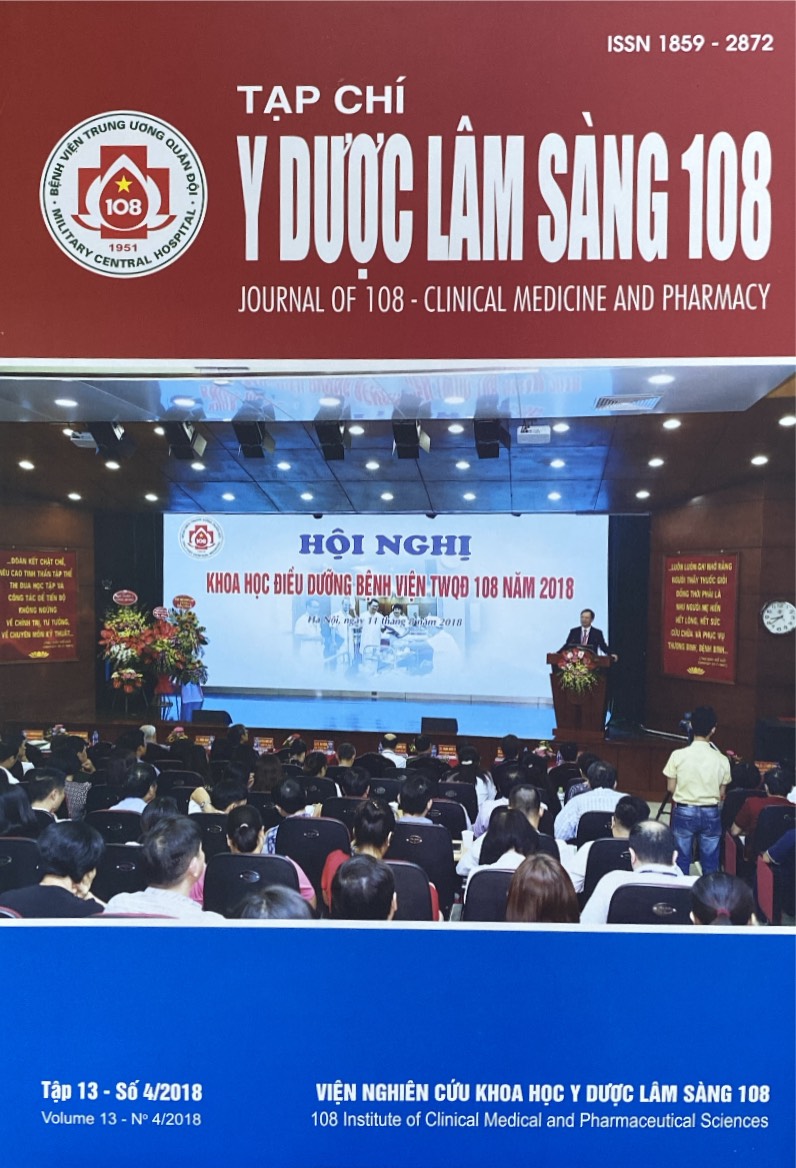The effects of sitagliptin add-on insulin resistance, beta cell function in patients with type 2 diabetes who were taking oral hypoglycemic agent (s)
Main Article Content
Keywords
Abstract
Objective: To evaluate the effects of sitagliptin add-on on insulin resistance and beta cell function in patients with type 2 diabetes who were taking other oral hypoglycemic agent(s). Subject and method: The study compared insulin resistance and beta-cell function assessed with HOMA2 before and after sitagliptin to other oral hypoglycemic agent(s) in type 2 diabetic patients. 23.8% and 26.7% of the patients received 50mg of sitagliptin for week 1 to 12, and for week 12 to 24, respectively. 76.4% and 73.3% of the patients received 100mg of sitagliptin for those 2 periods, respectively. Result: The mean age was 54.13 ± 10.11 years old, the female and male mad up 52.5% and 47.5%, respectively. The mean fasting plasma glucose (FPG) and HbA1c was 8.62 ± 1.67mmol/l and 7.93 ± 0.83%, respectively. After 24 weeks, FPG, HbA1c and fasting plasma C-peptide level decreased by 1.91 ± 1.90mmol/l, 1.45 ± 1.0% and 0.34 ± 0.28nmol/l, respectively. The HOMA2-IR assessed by C-peptide (HOMA2- IR-Cp) decreased by 1.04 ± 0.81 and HOMA %B assessed by C-peptide (HOMA2- %B-Cp) increased by 14.90 ± 34.55%. All the changes were statistically significant. After 24 weeks, the percentage of patients with increased HOMA2-IR-Cp decreased from 93.1% (baseline) to 78.2%, and the percentage of patients with decreased HOMA2-%B-Cp decreased from 69.1% to 50.6%. The both changes were statistically significant. Conclusion: Sitagliptin addition to other hypoglycemic agent(s) in patients with type 2 diabetes improved beta-cell function and decreased insulin resistance along with improved blood glucose levels.
Article Details
References
2. Nguyễn Thị Thu Thảo (2012) Nghiên cứu tình trạng đê kháng insulin và chức năng tế bào bế ta ở bệnh nhân đái tháo đường týp 2 mới được chẩn đoán. Y học thực hành 129: 929-930.
3. Katsuki AY, Sumida Y, Gabazza EC et al (2001) Homeostasis model assessment is a reliable Indicator of insulin resistance during follow-up of patients with type 2 diabetes. Diabetes Care: 362-365.
4. Ahren B, Foley JE (2016) Improved glucose regulation in type 2 diabetic patients with DPP-4 inhibitors: Focus on alpha and beta cell function and lipid metabolism. Diabetologia 59 (5): 907-917.
5. Charbonnel B, Karasik A, Liu J et al (2006) Efficacy and safety of the dipeptldyl peptidase-4 inhibitor sitagllptln added to ongoing metformin therapy in patients with type 2 diabetes inadequately controlled with metformin alone. Diabetes Care 29(12): 2638-2643.
6. Hermansen K, Kipnes M, Luo E et al (2007) Efficacy and safety of the dlpeptldyl peptidase-4 Inhibitor, sitagllptin, in patients with type 2 diabetes mellltus Inadequately controlled on gllmeplrlde alone or on glim epiride and metformin. Diabetes Obes Metab 9(5): 733-745.
7. Hanefeld M, Herman G A, Wu M et al (2007) Once-daily sitagliptin, a dipeptidyl peptidase-4 inhibitor, for the treatment of patients with type 2 diabetes. Curr Med Res Op in 23(6): 1329-1339.
 ISSN: 1859 - 2872
ISSN: 1859 - 2872
